How to Check a Vehicle’s Charging System
Charging System Description and Operation
During this time of the year(winter), we get a lot of calls for battery and charging system issues. So I figured it would be a good time to share alittle bit of knowledge!
The charging system on a vehicle is a pretty straightforward system once you know what you are looking at, but for some people, it can be confusing and result in spending money for unneeded parts and repairs.
The Charging System consists of the following components:
- Battery
- Mega Fuse/Fusible Link
- Battery Cables
- Alternator
- Module to command the signal on and off (on some models)
Not so bad right?
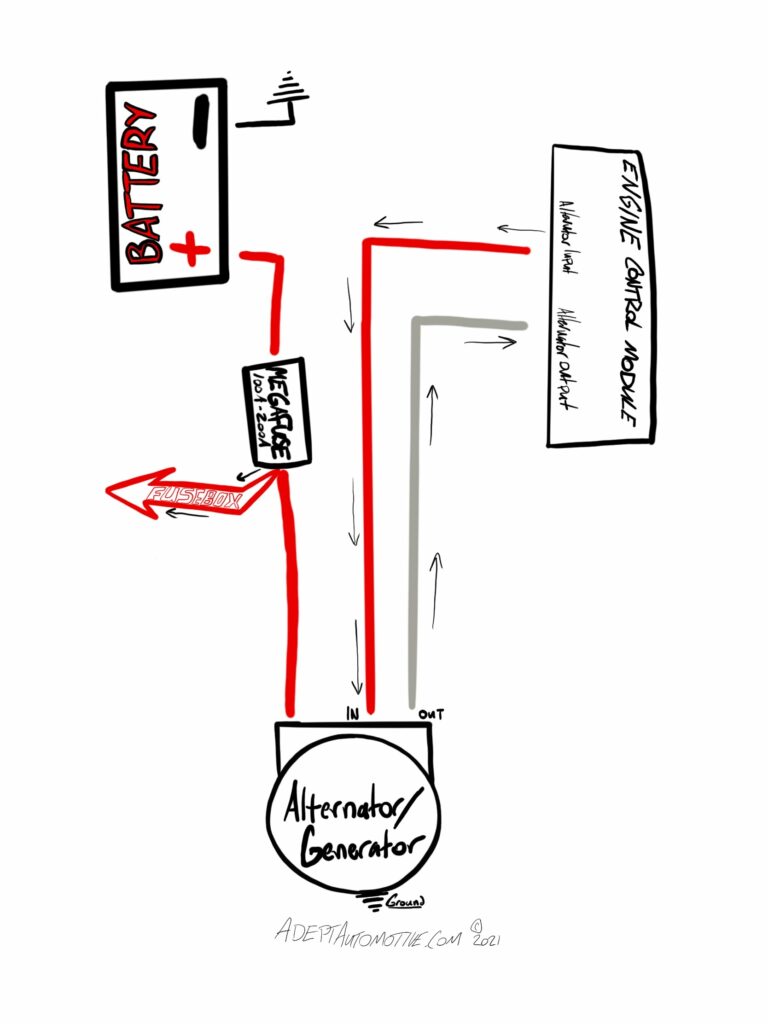
Basic Charging System Overview
The battery powers up all of the accessories and circuits in the vehicle, and nowadays that takes a lot of power. So where does the battery get the charge to maintain that demand for power? From the alternator assembly.
Once the voltage goes below a certain threshold, the alternator kicks on and sends a charge of around 14-14.5V to the battery to maintain a consistent charge (the exact charging voltage varies based on current demand from the battery). The alternator issues an internal regulator or external module to switch charging on and off. If this voltage is unable to be put out by the alternator or maintained by the battery then we have issues.
Charging System Issues and Diagnosis
When the charging system begins to malfunction, it is usually a pretty straightforward failure.
However, there are a few things that can cause intermittent issues, such as a module with a signal issue, a corroded/loose connection between the alternator and battery, or a shorted/open circuit between the module and alternator.
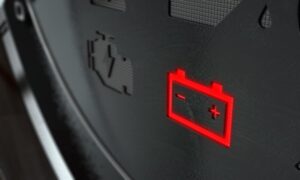
Battery/Charging System Warning Light
You will usually get a battery warning light or ‘service charging system‘ message that illuminates when there is an issue. When this happens, it is best to get somewhere you can park safely and get the issue figured out.
If you drive long enough with the battery/charging system malfunctioning, the vehicle will eventually lose enough voltage to the point it will begin to shut things down on it’s own. If you wait until this happens, then you can end up in an unsafe situation so just always be prepared in case of emergency.
Once you are at this point, it is time to diagnose the issue. Always Start simple.
- How do the battery terminals look?
- Are any cables loose or corroded?
- Does the serpentine belt look good(if the belt loses tension you will lose alternator function)?
- Do the connections at the alternator cable look okay?
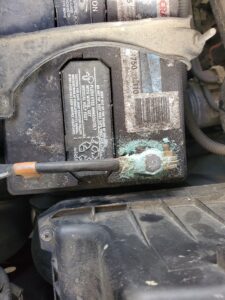
Dirty Ground Cable. Once corrosion gets bad enough it can cause charging and other electrical issues
If everything visually looks good, then it is time to start performing circuit and component testing.
Ideally, you will want to see around 12Volts at the battery, and around 14Volts when the alternator is on and charging. If the vehicle is turned on, and the voltage is dropping below 12V, then you know the charging system is not operating correctly.
For low voltage issues, I always like to start by getting the battery load tested to verify it can hold a proper charge. Once you know the battery is good, then you will need to check the signal at the Alternator.
Next, check to be sure the fusible link is not open, if it is, then you can get charging system issues. If the fusible link or mega-fuse is open, then that is usually a sign of a failing/failed alternator, or a loose connection somewhere causing the circuit to overheat.
Depending on the model, you will have a voltage input and output circuit at the Alternator electrical connector. The input signal to the alternator is switched on/off using feedback from the output signal. If you are getting a good input/ON signal, and there is still no charging output from the Alternator, then it is safe to proceed with replacing the Alternator and retesting the Charging System.
If you check and there is no signal at the Alternator, then you will need to perform a continuity test between the Alternator and Module to make sure the circuit is good.
Replacing the Alternator without verifying correct input/output signals can lead to wasted money and a bigger headache.
If the circuit/wiring is all good, then the problem will be inside the control module.
Be sure to completely verify everything else before replacing the module. Module failure is not super common.
Once you replace the faulty component or repair the circuit issue, be sure you verify the charging system is working correctly. Turn on all the accessories (lights, radio, fan) and verify the voltage at the battery is over 14V.

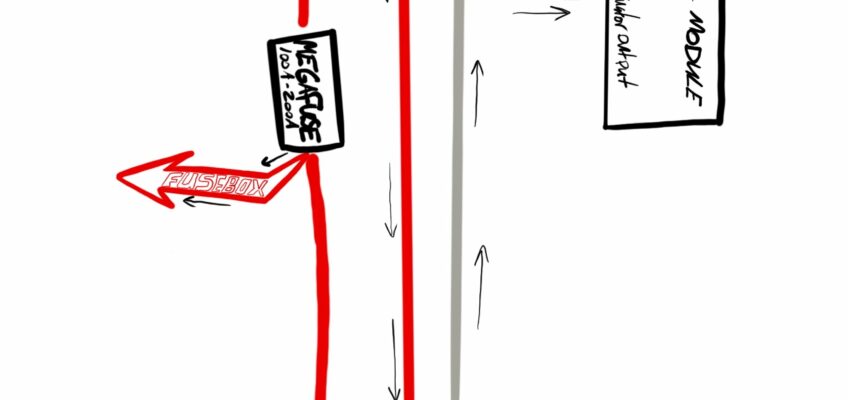
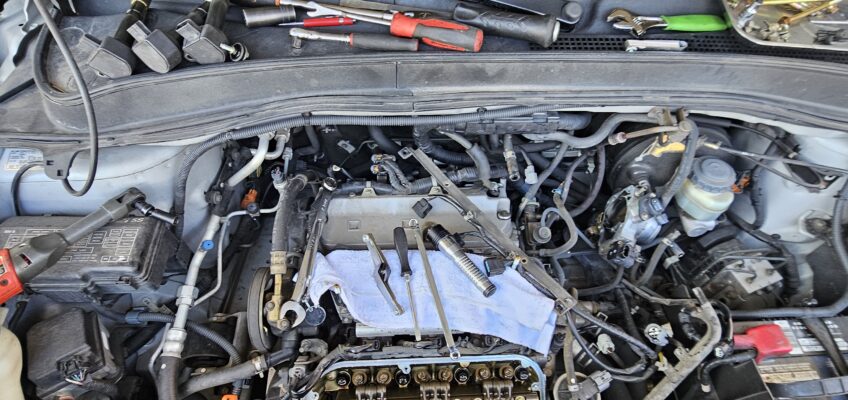
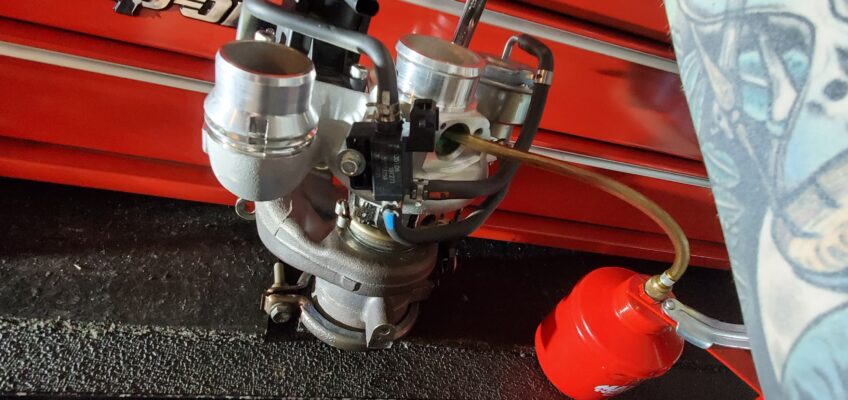
Hello, I just wanted to let you know that I enjoyed the content you’ve posted on your site. So many times I’ve been in a predicament when I could have used your information. Have you ever considered putting your information, the way you have it here in a small how to book? Most females, at least the ones I know, do not know anything about cars. Having a convenient how to booklet that we could carry in our purse or even in the dashboard of our cars would be lifesaving. The way you have explained things makes it easy to understand. I know myself for sure and others would appreciate not having to wait for a tow truck when we break down on the freeway or any where on the streets. I hope you will consider it and I look forward to hearing more from you.
Hey Gabriel. Very interesting article. Im not and expert in motorization and posts like this are extremely helpful. I can imagine that during winter there is higher risk of issues with charging system, and your detailed walkthrough will save myself and other readers lot of money. Looking forward to test your advise and recommendations in practice, and hopefully I will be able to perform at least basic check of this system by myself.
Cheers!